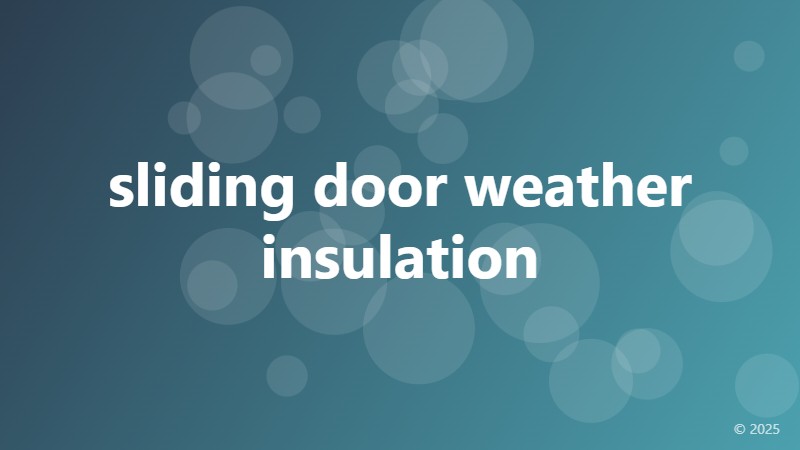sliding door weather insulation

Why Sliding Door Weather Insulation Matters
Sliding doors are a popular choice for many homeowners, offering unobstructed views and seamless transitions between indoor and outdoor living spaces. However, one of the biggest drawbacks of sliding doors is their potential to let heat in during the summer and cold air in during the winter, leading to increased energy bills and an uncomfortable living environment. This is where sliding door weather insulation comes in – a crucial aspect of maintaining energy efficiency and a cozy home.
The Importance of Weather Insulation for Sliding Doors
Weather insulation for sliding doors is designed to prevent air leaks and moisture intrusion, which can lead to a range of problems, including:
- Energy loss: When warm air escapes or cold air enters through gaps around the sliding door, your heating and cooling system has to work harder to maintain a comfortable temperature, resulting in higher energy bills.
- Moisture damage: Water can seep into the gaps around the door, leading to rot, mold, and mildew, which can compromise the structural integrity of your home.
- Noise pollution: Gaps around the door can also let in outside noise, making it difficult to relax and enjoy your living space.
How to Improve Sliding Door Weather Insulation
Fortunately, improving sliding door weather insulation is a relatively simple and cost-effective process. Here are some tips to get you started:
1. Seal the gaps: Use weatherstripping or door sweeps to seal the gaps between the door and the frame, as well as between the door and the floor. This will help prevent air leaks and moisture intrusion.
2. Upgrade to energy-efficient doors: Consider replacing old or inefficient sliding doors with new, energy-efficient models that feature advanced weather insulation technologies, such as thermal breaks and insulated frames.
3. Add door inserts: Door inserts are a type of secondary glazing that can be installed on the interior of the door to provide an additional layer of insulation and energy efficiency.
4. Use door curtains or drapes: Hanging door curtains or drapes can help reduce heat transfer and block cold air, making your home feel cozier and more energy-efficient.
Conclusion
Sliding door weather insulation is a crucial aspect of maintaining energy efficiency, comfort, and structural integrity in your home. By understanding the importance of weather insulation and implementing simple yet effective solutions, you can enjoy a warmer, quieter, and more energy-efficient living space.